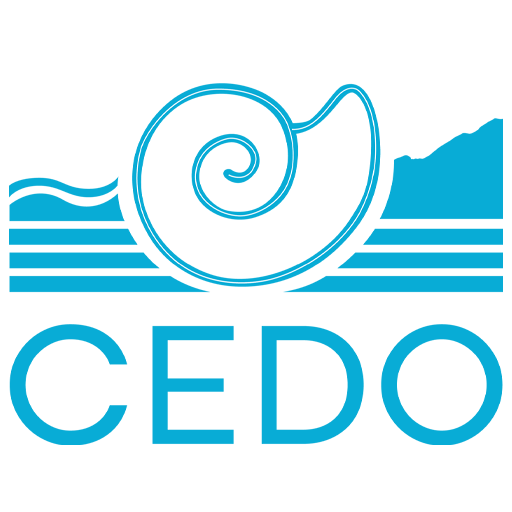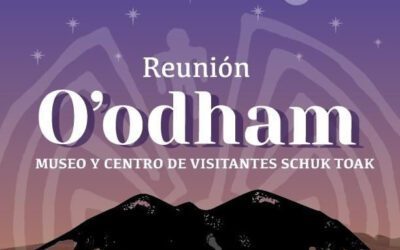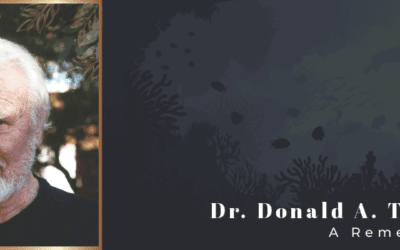[vc_row][vc_column][vc_separator][vc_column_text]By: Jessica Potter[/vc_column_text][/vc_column][/vc_row][vc_row][vc_column width=”1/2″][vc_column_text]As a child who loved the ocean but was reluctant to get into the water, I remember visiting Puerto Peñasco and being fascinated with all of the marine life I could see in the tide pools without even having to put my swimsuit on. I also remember being confused as to why sometimes, when I came running down to the beach excited to see clusters of hermit crabs and sea snails on a rocky shore, I would be met with nothing but sand and sea. While the changing tides would occasionally postpone my mission of finding an octopus in a tide pool, they added an element of charm and mystery to this area. Twice a day a city teeming with unusual creatures vanished underneath the water and all I could do was sit on the beach, be patient, and wait for it to reveal itself again.[/vc_column_text][vc_single_image image=”1638″ img_size=”full” onclick=”link_image”][/vc_column][vc_column width=”1/2″][vc_single_image image=”1634″ img_size=”full” onclick=”link_image”][/vc_column][/vc_row][vc_row][vc_column][vc_column_text]The more appropriate and slightly less endearing term for this vanishing city between the land and the sea is the intertidal zone. The Northern Gulf of California’s intertidal zones support a rich and diverse collection of species that have captivated and inspired many explorers, scientists, and creatives (such as the famous author John Steinbeck and marine biologist Ed Ricketts). A look into the tide pools in Puerto Peñasco is enough to convince anyone that these ecosystems are extraordinary, but how did this incredible assortment of marine life come to exist within the crevices and holes of the rocky reef? This region is characterized by a set of unique environmental conditions that influence the types of species that can survive there.[/vc_column_text][/vc_column][/vc_row][vc_row][vc_column width=”1/2″][vc_column_text]One of the most noticeable features of this area is the dramatic tidal range. The Northern Gulf of California has one of the largest tidal ranges in the world, with up to over twenty feet of the intertidal zone uncovered at low tide[i]. As a result, intertidal species must withstand drastic changes in their environment including exposure to air, sunlight, and increased visibility to predators twice a day.
Every organism that you see in a tide pool is specially equipped with their own method of defense against these conditions. Some species like the green chiton, a mollusc with prehistoric origins, have a muscular foot that strongly adheres to the rock and prevents them from being carried away by the surf or plucked off by predators[ii]. The Gulf turban snail has a shell “door” (called an operculum) that closes to keep in moisture when the tides recede[iii].
Behavioral adaptations are equally important for enduring the challenges that low tide brings. For example, clingfish form aggregations and minimize their movements to survive in areas with low levels of moisture and oxygen (such as the underside of a boulder)[iv]. Another fascinating aspect of the tides is their ability to initiate feeding behaviors.
As the tide begins to flood, clusters of red-fingered hermit crabs become active and disperse to feed[v]. Tall limpets leave the safety of their home spot (a mark in the rock they return to after feeding) and join them, but do not venture farther than a few inches away[vi].
When the tide begins to recede, rock lice, important members of the beach cleanup crew, come out from the crevices of rocks and rush farther down into the intertidal zone to feed upon algae and detritus while dodging the bills of shorebirds[vii]. The species that exist in this area between land and sea can physically withstand the tides and schedule their daily activities around them.[/vc_column_text][/vc_column][vc_column width=”1/2″][vc_single_image image=”1641″ img_size=”full” onclick=”link_image”][vc_column_text]A Gulf turban snail. The operculum is the spiral disc that sits within the opening of the shell, and it allows the snail to retain moisture when the tides recede | Illustration by Jessica Potter[/vc_column_text][vc_single_image image=”1640″ img_size=”full” onclick=”link_image”][vc_column_text]A chunk of coquina rock, which is composed of shell pieces that have cemented together over thousands of years | Illustration by Jessica Potter[/vc_column_text][/vc_column][/vc_row][vc_row][vc_column][vc_column_text]Another fluctuation that impacts this ecosystem is the extreme change in temperature between seasons. Summer temperatures can reach over 30 degrees Celsius while winter temperatures drop as low as 8 degrees Celsius[viii]. As a result, you will see different types and abundances of species present in the intertidal area depending on the time of year you visit[ix]. Species of large brown algae cover the rocky reef throughout spring, but many of them stop reproducing and begin dying off in the summertime[x]. Species like the California sea hare that prefer a colder, more temperate climate almost disappear from this region when temperatures rise[xi]. Seasonal changes can alter the composition of intertidal communities as well as the appearance of some species. Emerald coral, while normally celebrated for its brilliant green color, can take on a brownish hue in winter months[xii].[/vc_column_text][vc_single_image image=”1639″ img_size=”full” onclick=”link_image”][vc_column_text]The California sea hare. As this species prefers a temperate climate, populations decrease in the summertime | Illustration by Jessica Potter[/vc_column_text][/vc_column][/vc_row][vc_row][vc_column][vc_column_text]Along the coast, varying substrates support different types of species. The soft, muddy bottoms of esteros support burrowing organisms like clams and shrimp and those who are adapted to feed upon these organisms, such as shorebirds[xiii]. On the rocky beaches of Puerto Peñasco, basalt boulders are scattered throughout the upper intertidal, while the lower intertidal consists of coquina formations. Coquina rock, a unique feature of this ecosystem, is composed of crushed shell fragments that have cemented together over thousands of years. While this sharp, jagged rock can be difficult to walk on when you are trying to get a closer look at the tide pools, the irregular surface is what allows for a remarkably high level of biodiversity in this area.The structure of coquina provides various microhabitats that can be used by many different types of species[xiv].[/vc_column_text][/vc_column][/vc_row][vc_row][vc_column][vc_column_text]All these factors have contributed to the development of the diverse communities of life that inhabit the Northern Gulf of California’s shorelines. Roughly 5 percent of invertebrates[xv], and 19 percent of green and brown algae species[xvi] are endemic to this region, meaning they can be found nowhere else in the world. Among these species is a carnivorous whelk that has been observed to influence the development of a different adult form of barnacles it touches with its mucus[xvii], and small red octopus known to bite those who are brave enough to handle it[xiii]. While visitors are fascinated with the high level of biodiversity in this area, the rapid growth of the tourism and fishing industry over the past few decades has led to devastating impacts on life within the intertidal zone[xix]. In a time where human activity threatens this fragile environment, it is incredibly important to understand and appreciate what makes these ecosystems unique.[/vc_column_text][/vc_column][/vc_row][vc_row][vc_column][vc_single_image image=”1631″ img_size=”full” onclick=”link_image”][vc_column_text]Tidepool mural by Jessica Potter[/vc_column_text][/vc_column][/vc_row][vc_row][vc_column][vc_column_text][i]Brusca, Richard C., et al. Common Intertidal Invertebrates of the Gulf of California. University of Arizona Press, 1980.
[ii] Brusca, Richard C. A Seashore Guide to the Northern Gulf of California. Arizona-Sonora Desert Museum, 2004.
[iii] Hupp, Betty, and Marilyn Malone. The Edge of the Sea of Cortez: Tidewalkers’ Guide to the Upper Gulf of California. Edge of the Sea, LLC, 2016.
[iv] Eger, William H. “Ecological and Physiological Adaptations of Intertidal Clingfishes (Teleostei: Gobiesocidae) in the Northern Gulf of California.” 1977, pp. 1-263. The University of Arizona, PhD dissertation. The University of Arizona Campus Repository, https://repository.arizona.edu/handle/10150/287765
[v] Synder-Conn, E. “Tidal Clustering and Dispersal of the Hermit Crab Clibanarius digueti.” Marine Behaviour and Physiology, vol. 7, no. 2, 1980, pp. 135–154.
[vi] Yensen, Nicholas Patrick. “The Limpets of the Gulf of California (Patellidae, Acmaeidae).” 1973, pp.1-176. The University of Arizona, PhD dissertation. The University of Arizona Campus Repository, https://repository.arizona.edu/handle/10150/566366
[vii] Southwick, J. Wanless. “Environmental Factors That Influence the Timing of a Cyclic En Masse Foraging Migration of Ligia occidentalis Dana (Crustacea: Isopoda) on the Northern Gulf of California.” 1971, pp. 1-140. Brigham Young University, PhD dissertation. Birmingham Young University ScholarsArchive, https://scholarsarchive.byu.edu/etd/7887/
[viii] Lluch-Cota, Salvador et al. “The Gulf of California: Review of Ecosystem Status and Sustainability Challenges.” Progress In Oceanography, vol. 73, no. 1, 2007, pp. 1-26.
[ix] Brusca, 1980.
[x] McCourt, Richard Matthew. “Zonation and Phenology of Three Species of Sargassum in the Intertidal Zone of the Northern Gulf of California.” 1983, pp 1-165. The University of Arizona, PhD dissertation. The University of Arizona Campus Repository, https://repository.arizona.edu/handle/10150/185781
[xi] Brusca, 1980.
[xii] Schwarcz, Chris and Vernon, Monica. “Porites californica: Studies on its Ecology and Natural History in the Intertidal of Puerto Peñasco, Mexico.” 2008, pp.1-37. The University of Arizona, PhD dissertation. The University of Arizona Campus Repository, https://repository.arizona.edu/handle/10150/19223
[xiii] Hupp and Malone, 2016.
[xiv] Mackie, Steven A. and Boyer, Edward H.. “Intertidal Zonation of Macroscopic Invertebrates on the Coquina Reef at Playa De Estación, Puerto Peñasco, Sonora, Mexico.” Bios, vol. 48, no. 3, 1977, pp. 120–128.
[xv] Brusca, 2004.
[xvi] Mccourt, 1983.
[xvii] Lively, Curtis. “Predator-Induced Shell Dimorphism in the Acorn Barnacle Chthamalus anisopoma.” Ecology, vol.40, 1986, pp. 232-242.
[xviii]Brusca, 1980.
[xix] Brusca, Richard C and Michael E. Hendrickx. “Invertebrate Biodiversity and Conservation in the Gulf of California.” The Gulf of California: Biodiversity and Conservation, edited by Richard C. Brusca, University of Arizona Press, 2010, pp. 72-95.[/vc_column_text][/vc_column][/vc_row][vc_row][vc_column][vc_separator style=”shadow” border_width=”2″][vcj_team_member image=”1630″ name=”About the Author:” layout=”style3″ image_ratio=”portrait” color_name=”#ca972e”]Jessica Potter
I am a recent conservation ecology and biology graduate from Barrett, The Honors College at Arizona State University. I am an aspiring scientific illustrator and writer who is passionate about finding new and creative ways to develop closer relationships between people and the ecosystems that surround them. For my undergraduate honors thesis, I studied the intertidal zones of the Northern Gulf of California and worked with CEDO to create an illustrated informational brochure and mural that celebrates these unique areas.[/vcj_team_member][/vc_column][/vc_row][vc_row][vc_column][vc_column_text][ctct form=”1153″ show_title=”false”][/vc_column_text][/vc_column][/vc_row]









0 Comments